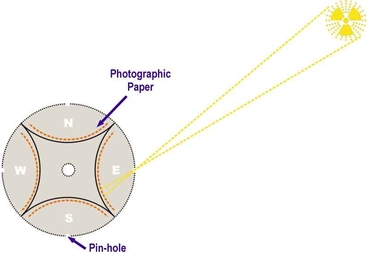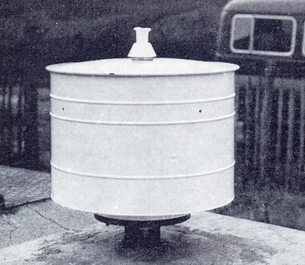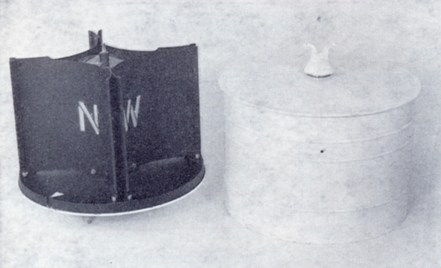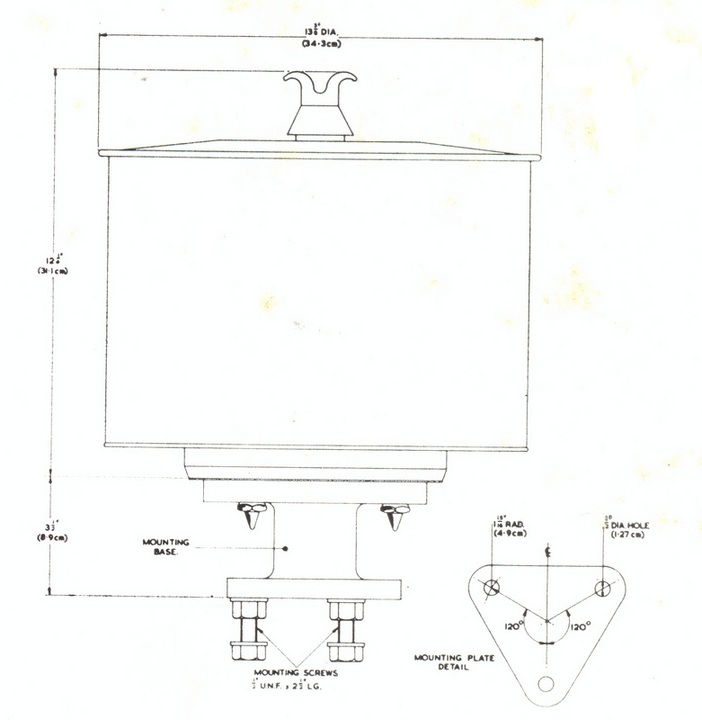GROUND ZERO INDICATOR

The principle workings of the GZI (Horizontal Plane)
The Ground Zero Indicator (GZI), consisted of four horizontally mounted cardinal compass point pinhole cameras within a metal drum. Each 'camera' contained a sheet of photosensitive paper onto which was pre-exposed horizontal and vertical calibration lines and horizon level. The flash from a nuclear explosion would produce a mark on one or two of the papers within the drum. The position of the mark enabled the bearing and height of the burst to be estimated.
With triangulation between neighbouring posts these readings would give an accurate height and position. The altitude of the explosion was important because a ground or near ground burst would produce radioactive fallout, whereas an air burst would produce only short distance and short lived initial radiations. This could be identified by assessing the height of the explosion imprint above the horizon level that had been pre-exposed onto the paper.
With triangulation between neighbouring posts these readings would give an accurate height and position. The altitude of the explosion was important because a ground or near ground burst would produce radioactive fallout, whereas an air burst would produce only short distance and short lived initial radiations. This could be identified by assessing the height of the explosion imprint above the horizon level that had been pre-exposed onto the paper.
The Ground Zero Indicator



